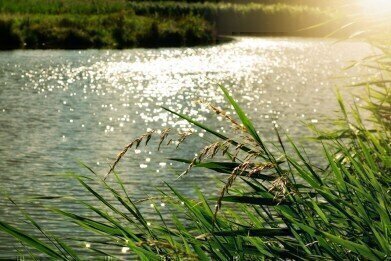Portable & field testing
Should Rivers Have Human Rights?
Apr 04 2017
There’s no doubt about it – the vast majority of the world’s water is being mistreated. Whether through waste disposal or simply littering, our oceans and rivers’ condition is becoming worse and worse. And there’s no better example than India’s Ganges – one of the most polluted rivers in the world, which has recently been granted human rights. But what will this achieve?
Taking the river to court
In a landmark legal move, India’s high court has declared the Ganges a living entity. It means, in law, the sacred river is now entitled to the same rights as a human. Why? It’s mostly down to its importance. Most Indians even believe the river has healing powers, with Hindus personifying it as the goddess of Ganga.
The legal status extends to the Yamuna, the longest tributary to the Ganges, and will come into effect immediately. They are now legally protected from any harm – much like a human – and as such, can be a party in a court case. Of course, they can’t take people to court themselves. Part of the order is that the rivers will be represented by the National Mission for Clean Ganga.
A growing trend
Remarkably, this isn’t the first time a river has been granted these rights. Just a few days earlier, New Zealand did the same thing for its Whanganui river. Similarly, this river is of special importance to the indigenous MÄori people, Will it solve the pollution problems? No – but it gives campaigners the legal backing in their efforts to get the river clean.
Some are more critical of the decision, however, suggesting there will be no real impact. “It is the constitutional duty of every citizen to protect our natural resources, including rivers," said Suresh Rohilla, from New Delhi’s Centre for Science and Environment. "We are failing in our duty, and we ignore other laws meant to protect our rivers. So simply giving the rivers greater rights does not automatically give them greater protection."
Bridge over troubled water
On top of pollution problems in the water itself, rivers are becoming problematic because of the bridges that go over them. Originally designed with a 50-year life span, around a quarter of America’s 600,000+ bridges are thought to be structurally deficient or even obsolete. Identifying these deficiencies is an issue in itself though, with traditional methods taking too long and often giving inaccurate results. But new techniques might be able to offer a solution, as discussed in the article ‘Mobile Infrared Scanning – A High-Tech, Accurate Alternative to Traditional Bridge Inspection Methods’.
Digital Edition
IET 35.2 March
April 2025
Air Monitoring - Probe Sampling in Hazardous Areas Under Extreme Conditions - New, Game-Changing Sensor for Methane Emissions - Blue Sky Thinking: a 50-year Retrospective on Technological Prog...
View all digital editions
Events
May 06 2025 Nuremberg, Germany
May 10 2025 Karachi, Pakistan
May 11 2025 Vienna, Austria
May 11 2025 Seoul, South Korea
Salon Analyse Industrielle & Instrumentation
May 14 2025 Paris, France












_(4427399123)-(2).jpg)






